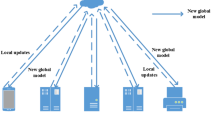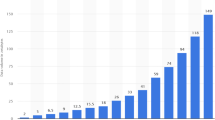Abstract
In present times, a massive quantity of big data has been generated by the Internet of Things (IoT) devices for a wide range of applications. The IoT devices generate an enormous data quantity that is troublesome for data processing and analytics functionalities, which is effortlessly managed by the cloud before the explosive development of the IoT. Specifically, the big IoT data analytics by mobile edge computing (MEC) becomes a hot research topic and needs comprehensive research works for intelligent decision making. This paper introduces a new generative adversarial network (GAN) with a quantum elephant herd optimization (QEHO) algorithm for MEC in IoT enabled big data environment called GAN-QEHO. The presented GAN-QEHO algorithm follows two-stage processes, namely feature selection (FS) and data classification. The QEHO algorithm is used to elect an optimal feature subset for the FS process. By the quantization of elephant individuals, the search scope of feature space can be enhanced, and an optimal tradeoff has been attained among exploration and exploitation. Then, the GAN model is employed for the classification process to identify different class labels. In order to validate the experimental results analysis of the GAN-QEHO algorithm, a series of simulations take place in terms of diverse aspects.








Similar content being viewed by others
Data availability
Data used in this study is available upon request to the corresponding author.
References
Gubbi, J., Buyya, R., Marusic, S., & Palaniswami, M. (2013). Internet of things (iot): A vision, architectural elements, and future directions. Future Generation Computer Systems, 29(7), 1645–1660.
Jararweh, Y., Doulat, A., AlQudah, O., Ahmed, E., Al-Ayyoub, M., & Benkhelifa, E. (2016). The future of mobile cloud computing: integrating cloudlets and mobile edge computing. In International Conference on Telecommunications, IEEE, pp. 1–5.
Abbas, N., Zhang, Y., Taherkordi, A., & Skeie, T. (2018). Mobile edge computing: A survey. IEEE Internet of Things Journal, 5(1), 450–465.
Snijders, C., Matzat, U., & Reips, U. D. (2012). “Big Data”: Big gaps of knowledge in the field of internet science[J]. International Journal of Internet Science, 7(1), 1–5.
Qureshi, N. M. F., Siddiqui, I. F., Unar, M. A., Uqaili, M. A., Nam, C. S., Shin, D. R., Kim, J. H., Abbas, A., & Bashir, A. K. (2018). An Aggregate Map Reduce Data Block Placement Strategy for Wireless IoT Edge Nodes in Smart Grid. Wireless Personal Communication. Springer.
Shafiq, M., Tian, Z., Bashir, A. K., Du, X., & Guizani, M. (2021). CorrAUC: a Malicious Bot-IoT Traffic Detection Method in IoT Network Using Machine Learning Techniques. IEEE Internet of Things Journal, 8(5), 3242–3254.
Abbas, A., Siddiqui, I. F., Lee, S. U. J., Bashir, A. K., Ejaz, W., & Qureshi, N. M. F. (2018). Multi-Objective Optimum Solutions for IoT-based Feature Models of Software Product Line. IEEE Access., 6, 12228–12239.
Dean, J., & Ghemawat, S. (2004). MapReduce: Simplified data processing on large clusters [J]. Operating Systems Design and Implementation (OSDI), 51(1), 107–113.
Ceph Introduction. http://ceph.com/
Rathore, M. M., Ahmad, A., & Paul, A. (2016). IoT-based smart city development using big data analytical approach. In Proceedings of IEEE International Conference on Automation (ICA-ACCA), pp. 1–8.
Alam, F., Mehmood, R., Katib, I., & Albeshri, A. (2016). Analysis of eight data mining algorithms for smarter Internet of Things (IoT). Procedia Computer Science, 98, 437–442.
Huang, C.-M., Shao, C.-H., Xu, S.-Z., & Zhou, H. (2017). The social Internet of Thing (S-IOT)-based mobile group handoff architecture and schemes for proximity service. IEEE Transaction on Emerging Topics in Computing, 5(3), 425–437.
Jian, A., Gui, X., Zhang, W., & He, X. (2013). Social relation predictive model of mobile nodes in Internet of Things. Elektronika Elektrotechnika, 19(4), 81–86.
Rasooli, A., & Down, D. G. (2012). A hybrid scheduling approach for scalable heterogeneous hadoop systems. In Proceedings of SC Companion High Perform. Computer, Networking, Storage Anal. (SCC), pp. 1284–1291
Hasan, M. Z., & Al-Turjman, F. SWARM-based data delivery in Social Internet of Things. In Future Generat. Comput. Syst., to be published.
Ahmad, A., et al. (2017). Toward modeling and optimization of features selection in big data based social Internet of Things. Future Generation Computer Systems, 82, 715–726.
Mardini, W., Khamayseh, Y., Yassein, M. B., & Khatatbeh, M. H. (2017). Mining Internet of Things for intelligent objects using genetic algorithm. Computers and Electrical Engineering, 66, 423–434.
Baker, T., Aldawsari, B., Asim, M., Tawfik, H., Maamar, Z., & Buyya, R. (2018). Cloud-SEnergy: A bin-packing based multi-cloud service broker for energy efficient composition and execution of data-intensive applications. Sustainable Computing Informatics and systems, 19, 242–252.
Vimal, S., Khari, M., Dey, N., Crespo, R. G., & Robinson, Y. H. (2020). Enhanced resource allocation in mobile edge computing using reinforcement learning based MOACO algorithm for IIOT. Computer Communications, 151, 355–364.
Vimal, S., Khari, M., Crespo, R. G., Kalaivani, L., Dey, N., & Kaliappan, M. (2020). Energy enhancement using Multiobjective Ant colony optimization with Double Q learning algorithm for IoT based cognitive radio networks. Computer Communications, 154, 481–490.
Vimal, S., Suresh, A., Subbulakshmi, P., Pradeepa, S. & Kaliappan, M. (2020). Edge computing-based intrusion detection system for smart cities development using IoT in urban areas. In Internet of things in smart Technologies for Sustainable Urban Development (pp. 219–237). Springer.
Fiore, U., De Santis, A., Perla, F., Zanetti, P., & Palmieri, F. (2019). Using generative adversarial networks for improving classification effectiveness in credit card fraud detection. Information Sciences, 479, 448–455.
Li, J., Guo, L., Li, Y., & Liu, C. (2019). Enhancing elephant herding optimization with novel individual updating strategies for large-scale optimization problems. Mathematics, 7(5), 395.
Wang, D., Chen, H., Li, T., Wan, J., & Huang, Y. (2020). A novel quantum grasshopper optimization algorithm for feature selection. International Journal of Approximate Reasoning, 127, 33–53.
Wang, G. G., Deb, S., & Coelho, L. D. S. (2015). Elephant herding optimization. In Proceedings of the 2015 3rd International Symposium on Computational and Business Intelligence (ISCBI 2015), Bali, Indonesia, 7–9 December 2015, pp. 1–5.
Funding
The authors did not receive support from any organization for the submitted work.
Author information
Authors and Affiliations
Contributions
Conceptualization, IK, GPJ, ELL; Data curation, ELL, VKN; Formal analysis, BS, ELL; Funding acquisition, JN, SM, GPJ; Investigation, IK, GPJ; Methodology, IK, BS; Project administration, VKN; Resources, JN, SM, GPJ; Software, BS, JN, SM; Supervision, GPJ, ELL; Validation, CS; Visualization, GPJ; Writing—original draft, IK; Writing—review & editing, GPJ.
Corresponding author
Ethics declarations
Conflict of interest
The authors declare that they have no conflict of interest. The manuscript was written through the contributions of all authors. All authors have given approval to the final version of the manuscript.
Ethical Approval
This article does not contain any studies with human participants or animals performed by any of the authors.
Additional information
Publisher's Note
Springer Nature remains neutral with regard to jurisdictional claims in published maps and institutional affiliations.
Rights and permissions
About this article
Cite this article
Kaur, I., Lydia, E.L., Nassa, V.K. et al. Generative Adversarial Networks with Quantum Optimization Model for Mobile Edge Computing in IoT Big Data. Wireless Pers Commun 127, 1565–1585 (2022). https://doi.org/10.1007/s11277-021-08706-7
Accepted:
Published:
Issue Date:
DOI: https://doi.org/10.1007/s11277-021-08706-7




